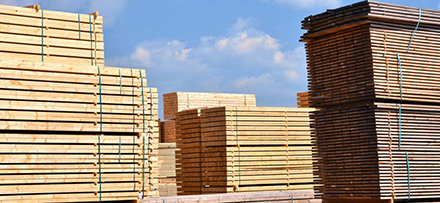If you’ve a timber yard, or driven past a timber truck, you’ve seen the rows upon rows of stacked timber, all cut to uniform lengths and widths. Have you ever wondered why we’re so fixated on this uniformity, rather than embracing the natural variation or ‘imperfections’ in timber that can actually add character and strength to a structure? Source: Timberbiz
Did you also know that the timber industry wastes huge amounts of time, money, and resources removing pieces that are considered to be ‘defective’?
If you answered ‘yes’ to any of those questions, you are in good company.
Dr Joe Gattas of UQ’s School of Civil Engineering believes we should flip the current equation and design buildings or usages specific to the qualities of the available timber, rather than using only those pieces that fit our rigid traditional requirements.
“In sustainable construction, one of the biggest unknowns lies in how we can reduce resource consumption, and subsequently and importantly, reduce total carbon emissions,” says Dr Gattas.
“There’s significant scope to reduce waste. We’re talking about going from using 40% of the tree to being able to use 80%.
“How do we use all those defects and funny looking bits and include them as part of a structure that creates added meaning and value?
“Wouldn’t it be nice to be able to show people around your building and, not only has that building been given a unique personality, but there’s also a story to tell about where the material is from and the history behind it?”
In addition to being a senior lecturer at UQ, Dr Gattas is a Chief Investigator at the Future Timber Hub, a collaboration funded by the Australian Research Council.
The Hub is a partnership between UQ, the Queensland Department of Agriculture and Fisheries, Arup, Hyne Timber, Lendlease, the Queensland Fire and Emergency Services, Scion NZ and fellow universities from Australia, Canada and New Zealand.
“If we better understand the ways trees grow, and how they are processed as building materials, we can design their end-use to match specific natural attributes and reduce the environmental impact of our building construction,” he says.
Rather than literally trying to jam a round peg into a square hole by cutting what nature provides into existing ‘standard’ sizes, the project seeks to observe, track and record the qualities of the stock available before the timber is even harvested.
Dr Gattas describes this as a “digital passport” for timber materials, adding it to a database that drastically increases the industry’s knowledge about available construction assets, and allows for more educated apportioning and final usages.
Ultimately, this data-driven approach means that from the outset, researchers and construction companies can access data from forests at the planning stages of a project, which means they can accurately predict building materials required through digital fabrication and mass customisation.
“That way, we don’t have to pick timber out of a lumber yard or hardware store,” says Dr Gattas.
“We can pick timber straight from the forest and can choose the exact piece of timber that best suits what we are trying to do.
“We are ensuring that the properties of any available piece are used where they can be most effective.”
Learn more about the myriad directions you can take by studying a Bachelor of Engineering (Honours) at UQ.






